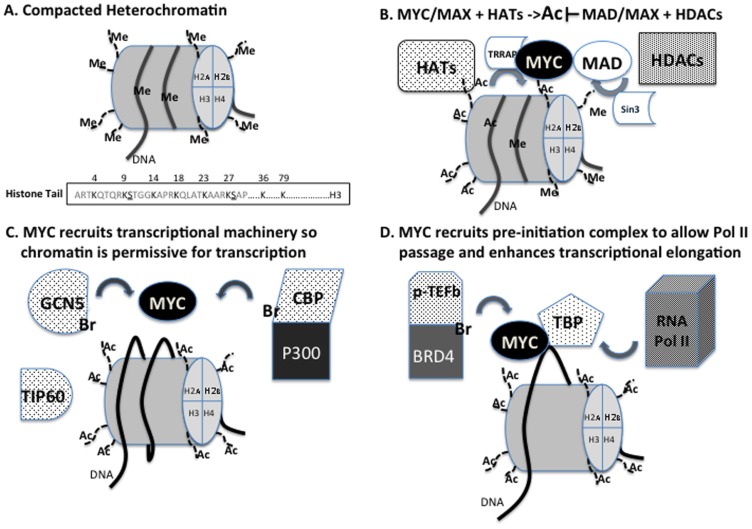FIGURE 2.
(A) Compacted heterochromatin is characterized by specific methylation of H3K9 and H3K27 is often correlated with decreased transcription. The EZH2 component of PRC2 contains the H3K27methylase while EHMT2 or G9a contains the H3K9 methylase. The methylation status of these amino acids is regulated by demethylases such as LSD1, JMJD2, and UTX. The subsequent acetylation (Ac) of H3K9 by GCN5 and H3K27 by CBP/p300 are associated with relief of gene suppression. (B) MYC recruits TRRAP to target loci to mediate MYC binding to histone acetyltransferases (HATs). Recruited HATs acetylate histone components to promote transcription. Conversely, MAD recruits Sin3 to target loci to mediate MAD binding to histone deacetylases (HDACs). Histone deacetylation allows for methylation events leading to transcriptional silencing. (C) Via TRRAP, MYC is able to recruit HATs GCN5, TIP60, and CBP/p300 to target loci to relax the nucleosomal barrier making DNA more accessible to transcriptional machinery and making the nucleosome more permissive for transcription. (D) MYC can also bind to TBP suggesting it can recruit elements of the transcriptional pre-initiation complex to initiate transcription. To maintain transcription MYC recruits p-TEFb and BRD4 to catalyze promoter pause release and transcriptional elongation. BRD4, as well as GCN5 and CBP, have bromodomains (Br) that recognize acetyl-lysines which has proven necessary for proper function.

